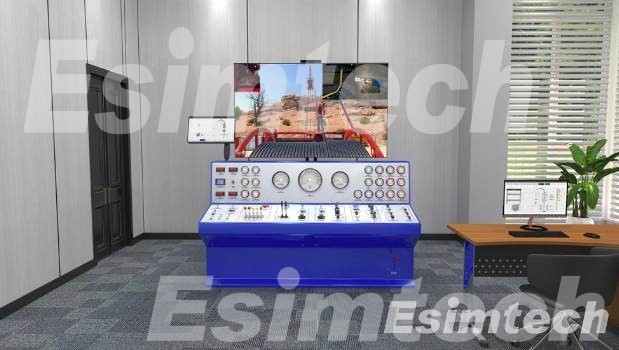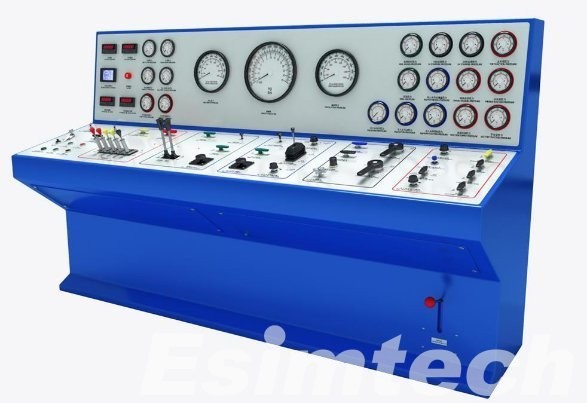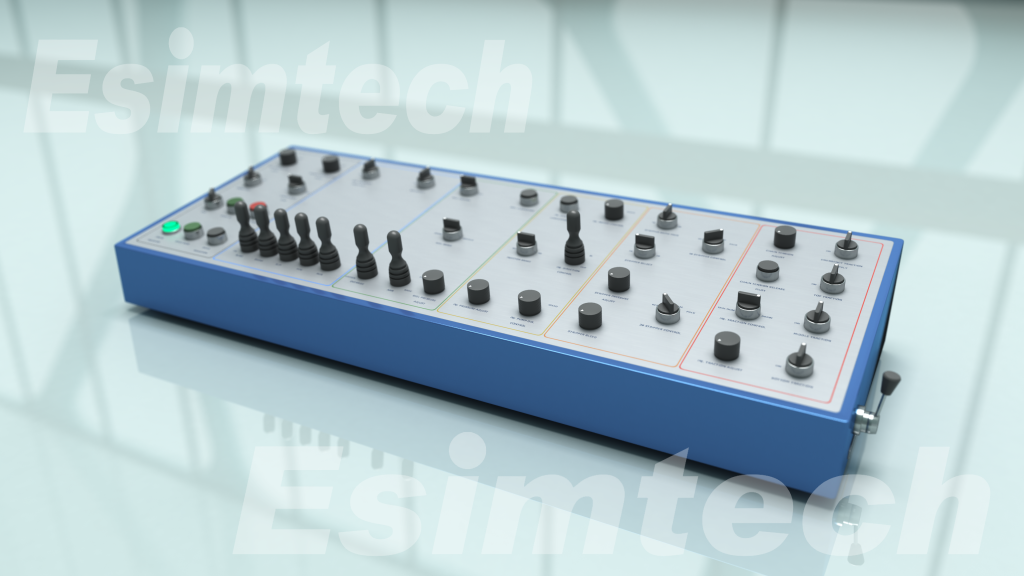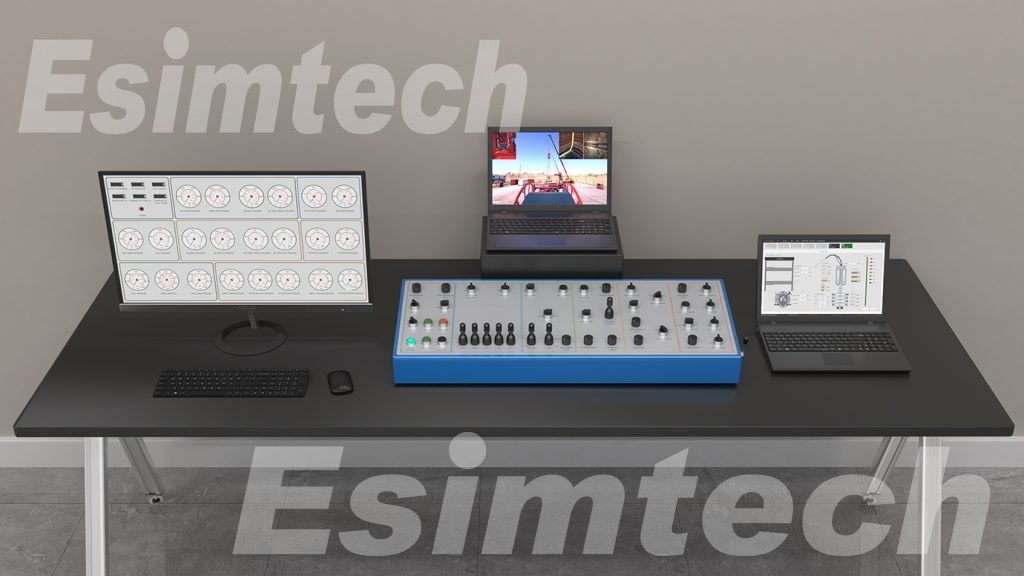Coiled Tubing Simulator: Everything You Need To Know
Coiled tubing is a long, continuous tube wound onto a spool that can be uncoiled as needed for various oil and gas industry operations. A coiled tubing simulator can simulate coiled tubing activities in the oil and gas sector in a virtual environment. It is a software program that allows users to simulate various scenarios and test various parameters in order to improve performance, increase safety, and lower costs.

What are the Components of a Coiled Tubing Simulator
A full size coiled tubing simulator is often made up of many main components that operate in tandem to produce a realistic and comprehensive simulation experience.
User interface
The graphical user interface provided by this component allows users to interact with the simulator. It may contain menus, buttons, and other controls that allow users to enter data, choose simulation parameters, and display simulation results.
Mathematical models
The mathematical models used to simulate the behavior of the coiled tubing and the fluids flowing through it are included in this component. Hydraulic models, mechanical models, thermal models, and chemical models are examples of these models. The models are primarily based on fluid mechanics, thermodynamics, and material science principles, and they are used to anticipate the behavior of the coiled tubing and fluids in various scenarios.
Data management
This component manages the input and output of data from the simulator. It may include tools for importing wellbore geometry, tubing dimensions, and fluid properties, as well as tools for exporting simulation results for analysis and optimization.

Visualization tools
This component handles the simulator’s data input and output. It may contain import tools for wellbore geometry, tubing dimensions, and fluid properties, as well as export tools for analysis and optimization of simulation findings.
Control system simulation
This component provides the user with visual feedback, displaying the position of the coiled tubing, fluid flow, and other pertinent parameters. 2D or 3D graphical interfaces, animations, and real-time monitoring displays are examples of visualization tools. These tools assist users in better understanding the simulated processes and making educated judgments.
Scenario builder
This component allows users to build and modify different simulation scenarios, specifying the wellbore parameters, tubing dimensions, fluid properties, and other simulation parameters. It may include a library of pre-built scenarios for common coiled tubing operations.

What are the Features of a Coiled Tubing Simulator
Realistic Simulation
Coiled tubing simulators use complex mathematical models to simulate the behavior of the coiled tubing and the fluids flowing through it. These models take into account various factors such as fluid flow rate, pressure, temperature, and tubing dimensions, which make the simulation results more accurate and realistic.
Scenario Building
Users can use this component to create and change various simulation scenarios by specifying wellbore parameters, tubing dimensions, fluid characteristics, and other simulation parameters. It could include a pre-built scenario library for common coiled tubing activities.

Virtual Control System
Complex mathematical models are used in coiled tubing simulators to represent the behavior of the coiled tubing and the fluids flowing through it. These models account for variables such as fluid flow rate, pressure, temperature, and tubing diameters, resulting in more accurate and realistic simulation results.
Data Visualization
The simulator may generate a variety of situations with varying wellbore characteristics, tubing dimensions, and fluid properties. This enables users to experiment with various conditions and examine their impact on the coiled tubing operation.
Data Analysis
The simulator may generate data like as pressure, temperature, and flow rates for study and optimization. This data can be transferred to other tools for further examination, such as spreadsheets or data analysis applications.
Training Tool
Coiled tube simulators can also be used for operator and engineer training. They can be used to simulate multiple scenarios and train operators to respond to diverse situations, hence enhancing safety and efficiency.
What are the Applications of a Coiled Tubing Simulator
Coiled tubing simulators are a vital tool in the oil and gas industry for assessing, optimizing, teaching, troubleshooting, and creating coiled tubing operations.
Planning and Design
Simulators for coiled tubing can be used to plan and develop coiled tubing operations. Engineers can identify the ideal settings for the process by modeling the operation.
Optimization
Coiled tubing simulators can be used to optimize coiled tubing operations by modeling and analyzing various scenarios. Engineers can use the simulator to assess the influence of various operational aspects such as fluid flow rates, pressure requirements, and tubing dimensions.
Troubleshooting
To debug coiled tubing operations, coiled tubing simulators can be employed. Engineers can detect potential concerns and develop solutions before performing the real activity by simulating the operation.
Research and Development
Simulators for coiled tubing can be utilized in the study and development of novel coiled tubing technology. Engineers can evaluate the performance of various materials and designs by simulating their behavior and making informed decisions about their utilization.
Limitations and Challenges of Coiled Tubing Simulator
Model Accuracy
To replicate the behavior of coiled tubing and fluids flowing through it, coiled tubing simulators use mathematical models. These models may not always be realistic, particularly when there are complicated interactions between the tubing and fluids or when the materials utilized are poorly described.
Data Availability
Input data for coiled tubing simulators include wellbore specifications, tubing dimensions, and fluid properties. This data may not always be available or may be incomplete, affecting the simulation’s accuracy.
Simulation Time
Coiled tubing simulators demand a large amount of processing power and can take a long time to run simulations, especially for complex activities. This may limit their application to real-time decision-making.
Cost
The development and maintenance of coiled tubing simulators can be costly. They necessitate experienced employees to operate and maintain, and the cost of licensing the software might be prohibitively expensive.
Complexity
Coiled tube procedures can be complicated, with numerous elements influencing the operation. Coiled tube simulators must precisely represent these elements, which can be difficult and require a high level of knowledge.
What Are the Future Directions of Coiled Tubing Simulator
Artificial Intelligence
Artificial intelligence (AI) algorithms could be used in coiled tubing simulators to increase accuracy and efficiency. Simulators may be able to learn from past simulations and update their models based on the data given by AI.
Augmented Reality
Augmented reality (AR) technology could be used in coiled tubing simulators to give a more immersive and engaging simulation experience. AR could enable users to visualize the coiled tubing operation in a real-world setting and interact with virtual components.
Cloud-Based Computing
Coiled tubing simulators could be built as cloud services, allowing for remote collaboration and real-time access to simulation data. Cloud-based simulators may also eliminate the requirement for costly hardware and software investments.
Integration with Other Tools
Other software tools, such as drilling simulators or reservoir simulations, could be integrated with coiled tubing simulators. Integration could offer engineers with a more comprehensive view of the entire oil and gas production process, allowing them to optimize coiled tubing operations in the context of the overall production system.
User-Friendly Interfaces
Coiled tube simulators with user-friendly interfaces that demand less technical expertise could be developed. This could make simulators more accessible to a broader range of users and enhance their industry adoption.
Summary
A Coiled tubing simulator is a critical instrument for enhancing safety, improving efficiency, lowering costs, providing training and development opportunities, and assuring consistent quality in oil and gas coiled tubing operations.
